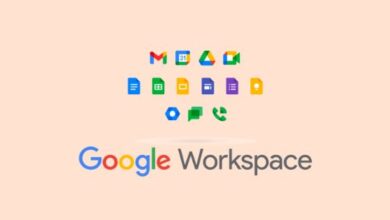How to Choose the Right Technology Stack for Your Custom App?
Choosing the right technology stack for your custom app is crucial for the success of any custom app development company. The technology stack forms the foundation upon which the app is built, influencing its performance, scalability, security, and even the ease of maintenance. With the rapid evolution of technology and the plethora of options available, selecting the optimal stack can be a daunting task. However, by following a systematic approach and considering key factors, custom app development companies can make informed decisions that align with their project requirements and strategic goals.
Understanding the Technology Stack
A technology stack, often referred to as a tech stack, is a combination of programming languages, frameworks, libraries, databases, and tools used in the development of an application. Each layer of the stack serves a specific purpose and contributes to the overall functionality and performance of the app. For custom app development companies, the choice of technology stack can significantly impact not only the development process but also the app’s long-term viability and success in the market.
Key Factors to Consider When Choosing a Technology Stack
1. Project Requirements and Goals
The first step in selecting the right technology stack is to clearly define the project’s requirements and goals. This includes understanding:
- App Purpose: What is the primary function of the app? Is it an e-commerce platform, a social networking app, a data analytics tool, or something else entirely?
- Target Audience: Who are the end users of the app? What are their expectations in terms of performance, usability, and features?
- Scalability Needs: How many users do you expect to support initially, and what are your growth projections? Will the app need to scale horizontally or vertically?
- Budget and Timeline: What are the budget constraints and timeline expectations for the project? Certain technologies may require more resources or time for development and maintenance.
By clearly defining these requirements upfront, custom app development companies can narrow down their choices and focus on technologies that best align with their project scope and objectives.
2. Programming Language
The choice of programming language is one of the fundamental decisions in building a technology stack. Factors to consider include:
- Developer Expertise: What programming languages are your developers proficient in? Choosing a familiar language can expedite development and reduce learning curves.
- Community Support: Is there a large developer community around the language? A robust community can provide resources, libraries, and support for troubleshooting and updates.
- Scalability and Performance: Evaluate whether the language can handle the expected workload and scale as the app grows.
Popular programming languages for custom app development include JavaScript (Node.js for backend, React.js for frontend), Python, Ruby, Java, and Swift (for iOS apps). The choice often depends on factors such as project requirements, ecosystem support, and development team preferences.
3. Frameworks and Libraries
Frameworks and libraries provide pre-written code and tools that streamline development and ensure consistency. Considerations include:
- Feature Set: Does the framework/library provide the necessary features and functionalities for your app’s requirements?
- Community and Documentation: How extensive is the framework’s community support? Is the documentation comprehensive and up-to-date?
- Compatibility: Ensure compatibility between the chosen framework/library and your selected programming language and other components of the stack.
For web development, frameworks like Django (Python), Ruby on Rails (Ruby), Express.js (Node.js), and Laravel (PHP) are popular choices. These frameworks offer built-in functionalities such as routing, authentication, and database integration, which can accelerate development and reduce coding effort.
4. Database Management System (DBMS)
The choice of DBMS depends on your app’s data storage and retrieval requirements:
- Relational vs. NoSQL: Determine whether your app needs a relational database (e.g., PostgreSQL, MySQL) or a NoSQL database (e.g., MongoDB, Cassandra).
- Scalability and Performance: Consider the DBMS’s ability to handle large volumes of data and support complex queries efficiently.
- Data Consistency and Integrity: Evaluate how well the DBMS ensures data consistency, integrity, and ACID compliance (for relational databases).
The selection of the right DBMS is critical as it directly impacts the app’s data management capabilities, performance, and scalability.
5. Infrastructure and Deployment
Decisions about infrastructure and deployment can influence the app’s scalability, reliability, and operational costs:
- Cloud vs. On-Premise: Determine whether to host your app on cloud platforms (e.g., AWS, Azure, Google Cloud) or on-premise servers.
- Scalability and Elasticity: Cloud platforms offer scalability and elasticity, allowing you to adjust resources based on demand.
- Security and Compliance: Implement robust security measures and ensure compliance with industry regulations (e.g., GDPR, HIPAA) when choosing your infrastructure.
Technologies like Docker containers and Kubernetes orchestration can facilitate deployment and management of app components, improving scalability and operational efficiency.
6. Developer Experience and Team Skills
Consider your development team’s skills and expertise when selecting technologies:
- Training Needs: Assess whether additional training or upskilling is required for your team to work effectively with selected technologies.
- Market Demand: Evaluate the availability of developers proficient in your chosen stack, as well as the demand for these skills in the job market.
Choosing technologies that align with your team’s strengths and expertise can streamline development, reduce risks, and ensure the successful delivery of the app.
Conclusion
Choosing the right technology stack for custom app development is a strategic decision that requires careful consideration of project requirements, scalability needs, developer expertise, and long-term maintenance considerations. By following a systematic approach and leveraging case studies and best practices, custom app development companies can select technologies that align with their project goals, streamline development processes, and deliver robust and scalable applications to their clients.
In summary, the process of selecting a technology stack for custom app development involves evaluating various factors such as programming languages, frameworks, databases, infrastructure, and developer expertise. By aligning these elements with project requirements and strategic objectives, custom app development companies can build scalable, efficient, and maintainable applications that meet both immediate needs and long-term business goals.



